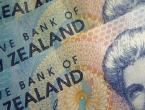EUR/USD
1.16713
0.401%
Gold
4195.74
-0.237%
Oil
58.948
0.871%
USD/JPY
155.133
-0.469%
GBP/USD
1.33466
1.018%
GBP/JPY
207.054
0.560%
Spains Economy Minister stated that Spain will only utilize approximately 25% of the available loans from the EU recovery fund. Spain has not yet felt any significant impact from US tariffs at the macro level. Spain is confident that a trade agreement between the EU and Mercosur can be signed before the end of the year.White House official: The U.S. and Russia held in-depth and productive talks.The Central Bank of Peru said it bought $51 million in the spot market.Boeing still expects to complete the merger with Spirit Airlines by the end of the year.The Federal Reserve accepted a total of $2.514 billion from 40 counterparties in its fixed-rate reverse repurchase operations.











